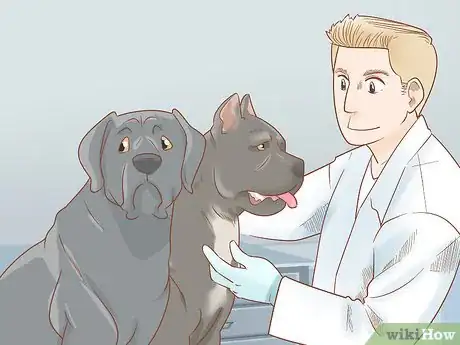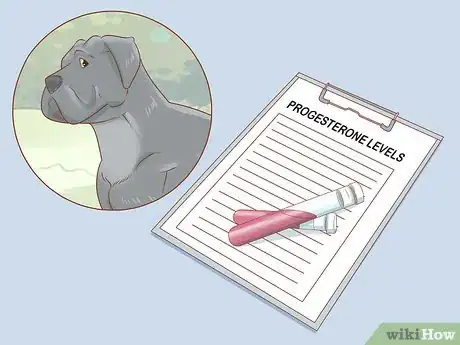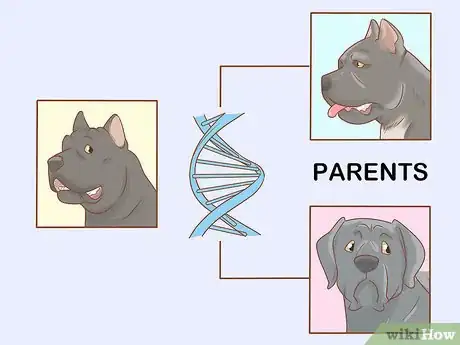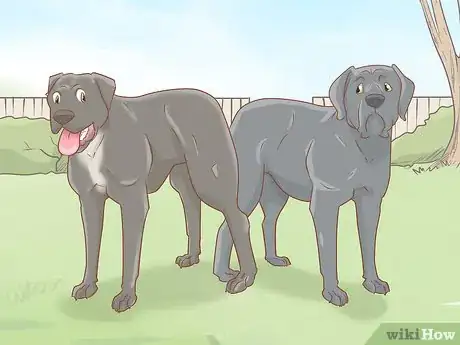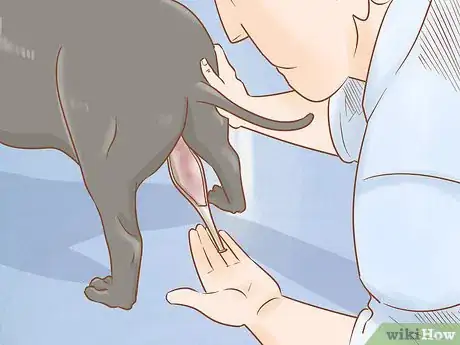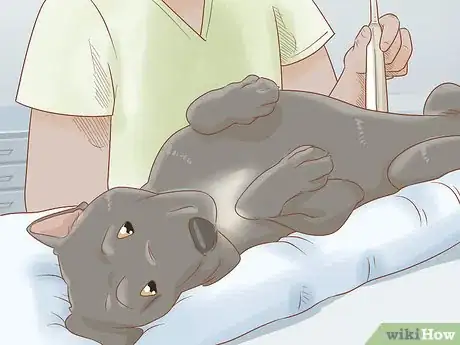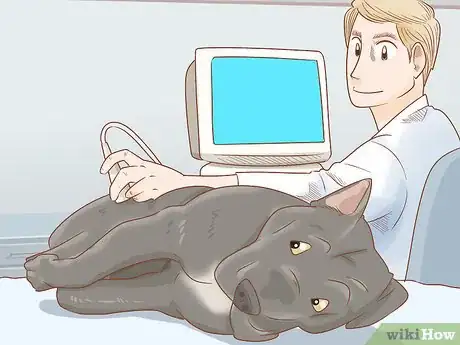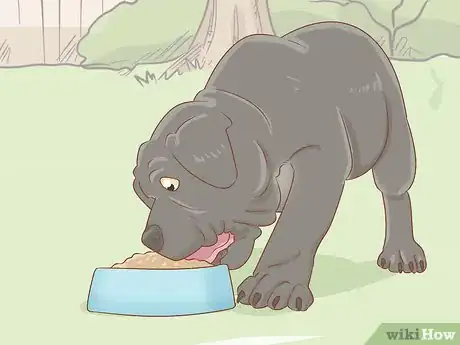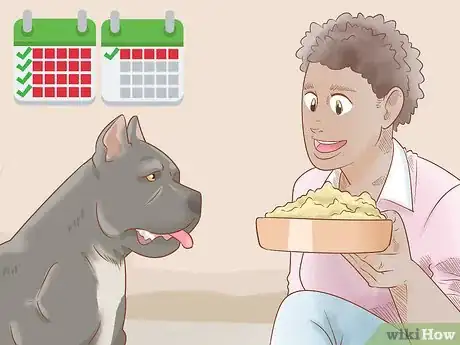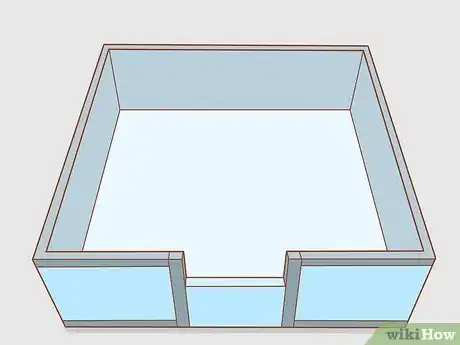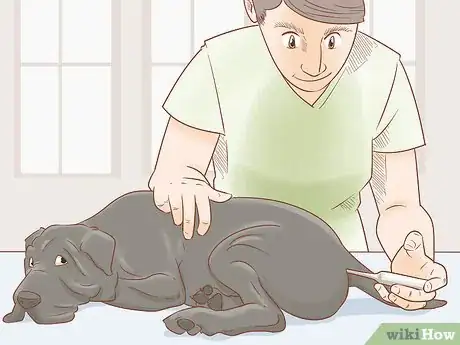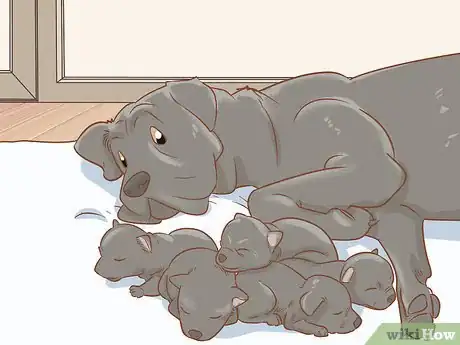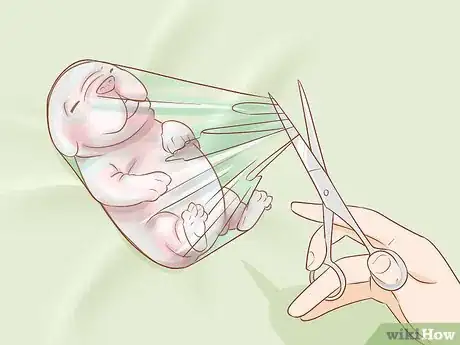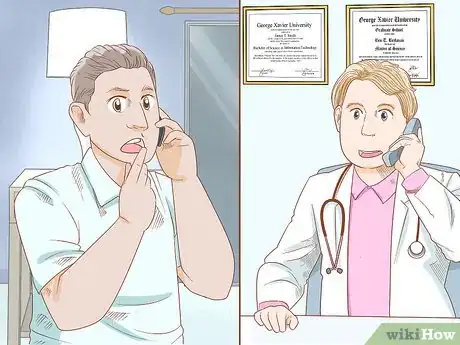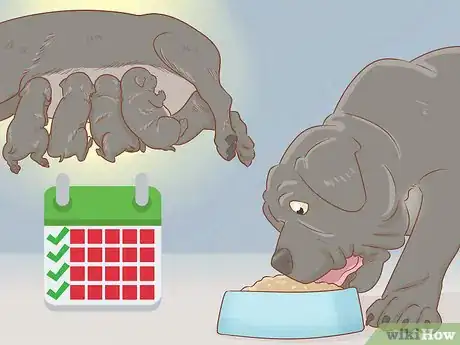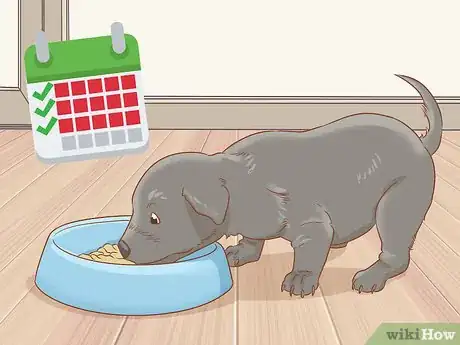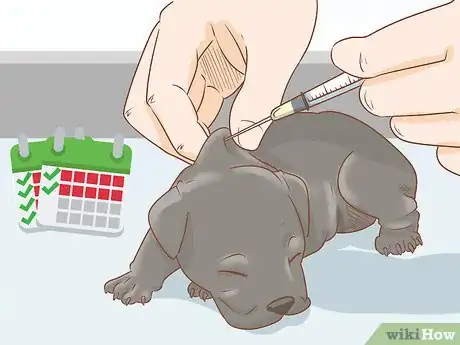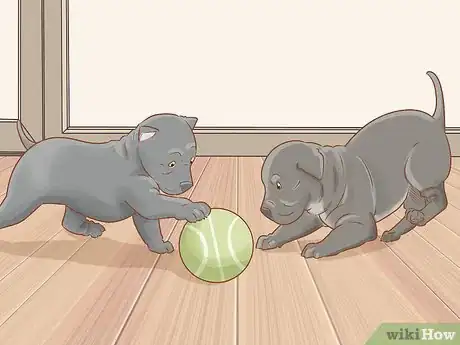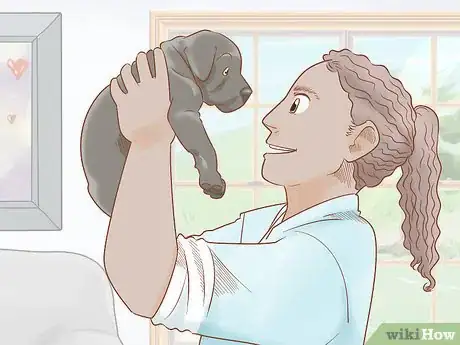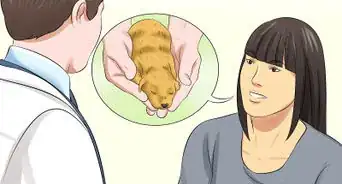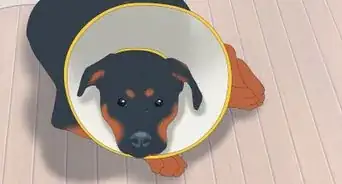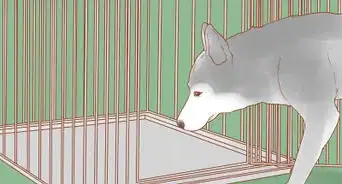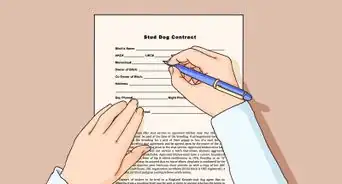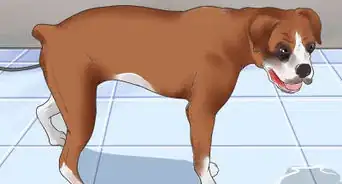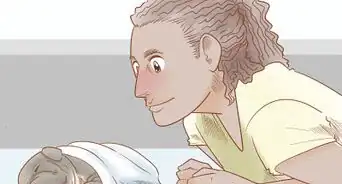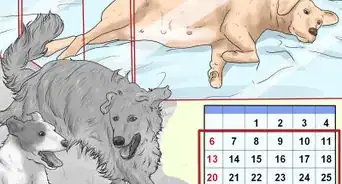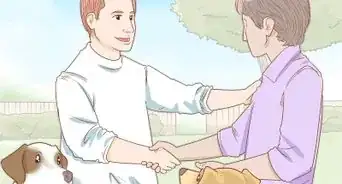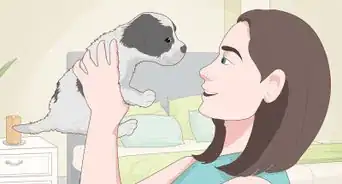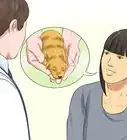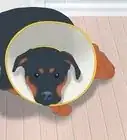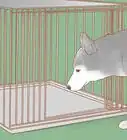This article was co-authored by Tom Robertson. Tom Robertson is a Dog Breeding Specialist and the Owner of Prize Poodles and Doodles. With over 20 years of experience, he specializes in breeding doodles. Tom has also received additional educational training in dog grooming, boarding, and training.
There are 14 references cited in this article, which can be found at the bottom of the page.
This article has been viewed 52,147 times.
Cane corsos are an ancient breed of guard dog from Italy. These beloved working dogs have surged in popularity in recent years, but it is still difficult for many people to find puppies. If you want to start breeding your cane corso, you will need a healthy breeding partner for your dog. Pregnancy typically lasts 63 days for dogs. Afterwards, both the mother and the puppies will require special care. With veterinary supervision, however, you may be able to produce a healthy and strong litter of new cane corso puppies.
Steps
Evaluating the Health of the Parents
-
1Locate a mate for your dog. If you only own one cane corso, you will need to hire or recruit a mate for it. Check the registry of a kennel club or the Cane Corso Association of America (CCAA) to see if there is anyone interested in mating their dog with yours.[1]
- If you have a female dog (or dam), you may need to pay for a male stud. If the stud has a strong pedigree or awards, their fees may be higher. Female dogs should be at least eighteen months old before they breed.
- If you have a male dog, keep in mind that generally the owner of the dam keeps the puppies. If you want a few of the puppies, you can make an arrangement in which you hire your stud for free in exchange for puppies.
-
2Take both dogs to the vet. A full health examination is needed before the dogs can mate. This increases the odds for a healthy pregnancy and a litter of healthy puppies.Advertisement
-
3Test the progesterone levels of the female. Progesterone is a hormone that can tell you how fertile your female dog is. By testing progesterone, your vet can tell you the best time to mate your dog.[2]
-
4Do genetic testing on both parents. Cane corsos are generally healthy dogs. Like all dogs, they are susceptible to hip and elbow problems. A DNA test may indicate how likely your puppies are to develop problems. If the probability is high, do not breed the dogs. Some common problems in cane corso include:
- Hip and elbow dysplasia
- Epilepsy
- Ectropion (eyelid folded out) and entropion (eyelid folded inward)
- Skin allergies
Mating the Dogs
-
1Find potential adopters. Even before your dog is pregnant, try to find at least a few potential adopters for the puppies. Advertise that you are going to have a litter of puppies, and create a list of interested people.
- Tell your friends, vet, and social media networks about your plans to breed the dog. Ask them to refer you to anyone interested in adopting one.
- You can also contact a kennel or the CCAA. People who are searching for cane corso puppies will often start there to look for breeders.
-
2Wait until the female is in heat. In general, cane corso go into heat every six months. When your dam is in heat, it may start urinating more often. You may notice a slight pinkish twinge to the urine. Nervous behavior is also normal. The dam may lift up its rear end to male dogs and hold its tail off to the side. This is a sign that it is ready to mate.[3]
-
3Take the dam to the stud to mate. Leave the dogs alone so that they can mate. The stud will mount the dam, and they will stay attached for about ten to thirty minutes. Do not separate the dogs, as you might accidentally injure them.[4]
- For the best results, try mating the dogs two or three times. Let them mate once every two days.
- You will typically take the dam to wherever the stud is. This is because male dogs tend to get more nervous in strange places than female dogs do.
-
4Try artificial insemination if other options haven't worked. Artificial insemination is useful if you cannot find a nearby stud or if the dam is having problems conceiving naturally. While it is an expensive process, many veterinary clinics now offer it.[5]
- The vet will monitor the dam's progesterone levels so that semen is injected at the most fertile time.
- You can get frozen donor sperm from a stud if you can't find a stud in your area.
- If you have a stud, its sperm will be collected by introducing it to a female in heat. The vet will collect the dog's sperm from an artificial vagina when the male dog tries to mount the female.
-
5Watch for signs of pregnancy. Verify if the dam is pregnant by taking it to the vet 28 days after its last mating. The vet will determine if the dog is pregnant by feeling the abdominal area with their fingers (which is called a palpitation) or by using ultrasound.[6]
- A pregnant dog may start gaining weight, and her nipples will start swelling. Dogs with false pregnancies may also show these signs, however.
Caring for a Pregnant Cane Corso
-
1Take the dam regularly to the vet for check-ups. The vet will monitor the pregnancy to make sure that both the dam and the puppies are healthy. They also do abdominal palpitation and x-ray tests to determine the litter size.
- For abdominal palpitation, your vet will feel your cane corso's abdominal area for sacs. Each sac carries a puppy. This can be done at day 28 of the pregnancy.
- X-rays will show how many fetal skeletons are in your dog's uterus. These can be done on day 45 of pregnancy.
-
2Feed the dam the same diet it ate before pregnancy. For the first 40 days of pregnancy, do not change the dog's diet. The dam may gain a few pounds, but there should not be significant weight gain. If the dog begins to lose weight, take it to the vet.[7]
-
3Increase food after 40 days. For the last few weeks of pregnancy, your dog may need to eat 30% more than it normally eats. Supplement its diet with puppy food to help give it the extra energy that it needs.[8]
- Your vet should be able to tell you exactly how much more your dog needs to eat based on its litter size. The larger the litter, the more it will eat during this time.
-
4Prepare a whelping box for the puppies. Once you know for certain that your dog is pregnant, buy or make a whelping box. This is where the dog will give birth and where it will nurse the puppies. Place the whelping box in a warm, dry, and quiet area of your home. Show the dam where the whelping box is, so she knows where to go during labor.[9]
- Line the box with newspaper at first. This will help you clean up a messy birth. You can give the dogs blankets when the puppies are born.
- Whelping boxes can be bought online or at pet stores.
Birthing the Puppies
-
1Take the dog's temperature around day 60. Most dogs give birth after 63 days of pregnancy. A few days before your dog is ready to give birth, take its temperature with a rectal thermometer. When the temperature drops to 100 °F (38 °C), you can expect the puppies to be born within 24 hours.
- The dog may start pacing, digging, or moving anxiously around. This can go on for between six and twelve hours before the dog gives birth.
-
2Allow the dam to give birth naturally. In most cases, you should not have to interfere with labor. Puppies will be born roughly once every 45 to 60 minutes. After each puppy is born, the mother will tear off their membrane sacs, chew off the umbilical cord, and lick each puppy thoroughly. The puppy should then start nursing.[10]
- If the puppy doesn't go to the teat, you can gently pick it up and put it there. It is very important for the puppies to nurse within the first twelve hours after birth.
- If you have a large litter, the mother may stop and rest partway through.
-
3Open up the membrane sacs if the mother is unable to. In some cases, the dog may be unable or too tired to remove the membrane. In this case, tear the sac with your fingers near the puppy's head, and pull back the membrane. Clear away any fluids or gunk around its mouth and nose. Gently massage the puppy with a towel.[11]
-
4Call the vet if there is an emergency. In some rare cases, the dog may struggle to give birth to all of the puppies. In these cases, you should contact your vet immediately. Call your vet if:
- The dog hasn't given birth after 70 days of pregnancy.
- There are more than two hours between births.
- The dog experiences contractions for over an hour without giving birth.
- The dog does not go into labor 24 hours after its temperature drops.
- The dog appears to be in extreme pain (some grunting and discomfort is normal).
Caring for Cane Corso Puppies
-
1Feed the mother four meals a day for four weeks. During lactation, the mother will need twice as many calories as normal. Buy a dog or puppy food with at least 430 calories per cup. Instead of feeding the dog once or twice a day, give the mother four smaller meals broken up throughout the day.
- The mother may not eat for two days after giving birth. This is normal.
-
2Wean the puppies onto solid food at three weeks. Mix one part of puppy milk replacer with one part water in a saucer once or twice a day. After about four days, you can then start adding small amounts of crumbled puppy food to the milk. Every day, give them less milk until they can eat solid food on their own. This usually happens around four or six weeks of age.[12]
-
3Vaccinate the puppies at six weeks. Take the puppies to the vet so that they can get their first round of shots. These include shots for distemper, measles, parainfluenza, and bordetella. The vet will also examine the puppies for potential health issues.[13]
-
4Let the puppies play and socialize. Cane corso are an extremely active breed. As soon as the puppies can see and walk, they will start racing around your home. Be prepared to give them plenty of room to run and roam.[14]
- Proper socialization from a young age is important for this breed. Make sure they are exposed to plenty of new people while they are young.
- Try not to walk or exercise the puppies after they eat. Cane corsos are very vulnerable to bloat.
-
5Send the puppies to their new homes between eight and twelve weeks. Puppies should not leave their mother before eight weeks of age. Most people adopt puppies between eight and twelve weeks of age.[15]
Community Q&A
-
QuestionAt what age do female Cane Corsos come into season?
 Community AnswerWhile she may begin heat cycles earlier (10 - 12 months old), you should wait until your dog is at least 18 months old before breeding.
Community AnswerWhile she may begin heat cycles earlier (10 - 12 months old), you should wait until your dog is at least 18 months old before breeding. -
QuestionHow old should a male be before studding, and will it change his demeanor?
 Community AnswerUsually, they should be about three years or so. Studding shouldn't change your dog's behavior in any major way.
Community AnswerUsually, they should be about three years or so. Studding shouldn't change your dog's behavior in any major way.
References
- ↑ http://www.akc.org/dog-breeders/responsible-breeding/#mate
- ↑ http://www.akc.org/content/dog-breeding/articles/timing-ovulation/
- ↑ http://www.akc.org/content/dog-care/articles/when-dogs-in-heat/
- ↑ http://www.akc.org/dog-breeders/responsible-breeding/#mating
- ↑ http://www.peteducation.com/article.cfm?c=2+2109&aid=890
- ↑ http://www.akc.org/dog-breeders/responsible-breeding
- ↑ https://vcahospitals.com/know-your-pet/feeding-the-pregnant-dog
- ↑ https://vcahospitals.com/know-your-pet/feeding-the-pregnant-dog
- ↑ http://www.akc.org/dog-breeders/responsible-breeding/#mate
- ↑ http://www.akc.org/dog-breeders/responsible-breeding
- ↑ http://www.akc.org/dog-breeders/responsible-breeding
- ↑ https://vcahospitals.com/know-your-pet/breeding-for-dog-owners-caring-from-birth-to-weaning
- ↑ http://www.akc.org/content/health/articles/puppy-shots-complete-guide/
- ↑ http://www.petguide.com/breeds/dog/cane-corso/
- ↑ https://www.akc.org/expert-advice/puppy-information/best-age-bring-puppy-home/
About This Article
Before you breed two cane corsos, take them both to the vet to make sure they're healthy enough for breeding. You should also do genetic testing on both parents, since you won't want to breed them if there's a high probability that the puppies will develop problems. If everything checks out at the vet and with the tests, wait until the female is in heat, which usually happens every 6 months. Then, mate the dogs 2-3 times, waiting a couple of days in between each mating session. After 28 days, you can take the female to the vet to see if she's pregnant. If she is, it will be about 63 days before she gives birth to her puppies. For advice on how to birth and care for cane corso puppies, scroll down!

